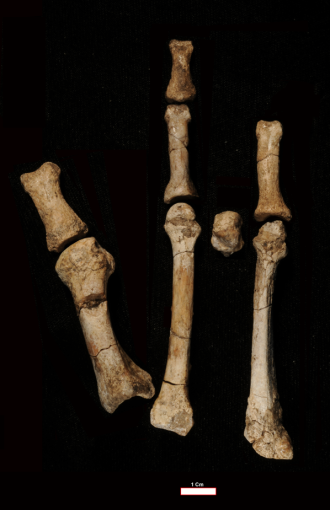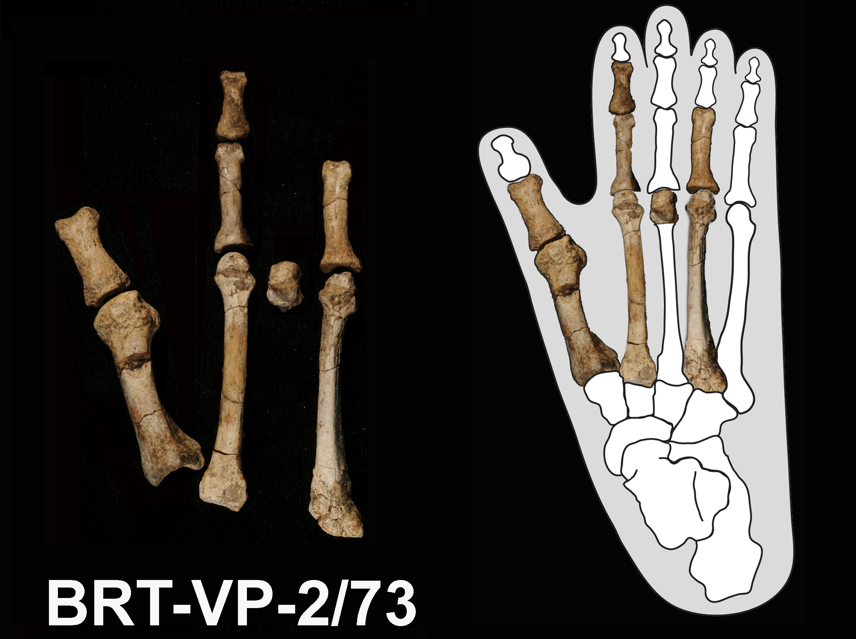Media release
From:
A 3.4-million-year-old partial foot found in Ethiopia in 2009 is shown to belong to an ancient human relative named Australopithecus deyiremeda, a more primitive species of Australopithecus than the famous ‘Lucy’ (A. afarensis). The discovery, published in Nature this week, solves a long-running mystery, but also offers new insights into the lifestyles of ancient hominins living in eastern Africa around 3 to 4 million years ago.
The Afar region of Ethiopia has been shown to have been home to two species of Australopithecus between 3 and 4 million years ago: the familiar A. afarensis and less familiar A. deyiremeda; the latter was described just 10 years ago. In 2009, prior to the formal identification of A. deyiremeda, a partial skeleton of a hominin foot dating to around 3.4 million years ago was found in the same area of the Afar region and was known as the Burtele Foot. This foot seemed distinct from that seen in A. afarensis but could not be assigned to any particular species owing to the lack of skull or tooth fossils that might have been associated with it.
Yohannes Haile-Selassie and colleagues report the discovery of further hominin fossils, dating to around 3.47 to 3.33 million years ago in the same region, which both improve our understanding of A. deyiremeda and enable the attribution of the Burtele Foot to this species. They describe newly discovered fossils, including fragments of pelvis, skull and a jawbone with 12 teeth, that can be assigned to A. deyiremeda and that were found in the same stratigraphic section of the ground as the Burtele Foot. The shape of the teeth, together with previously described features of the bones, suggest that A. deyiremeda was more primitive than A. afarensis. Analysis of the enamel isotopes indicates that A. deyiremeda ate leaves, fruit and nuts from trees, shrubs or herbs — a less diverse diet than that of A. afarensis.
The association of the Burtele Foot to A. deyiremeda adds to previous evidence indicating the presence of multiple bipedal hominins during the Pliocene epoch (around 5.33 to 2.58 million years ago). The search for further fossils in this region will be essential to fully understand the origins of human-like bipedalism, the authors conclude.
Multimedia







 International
International


